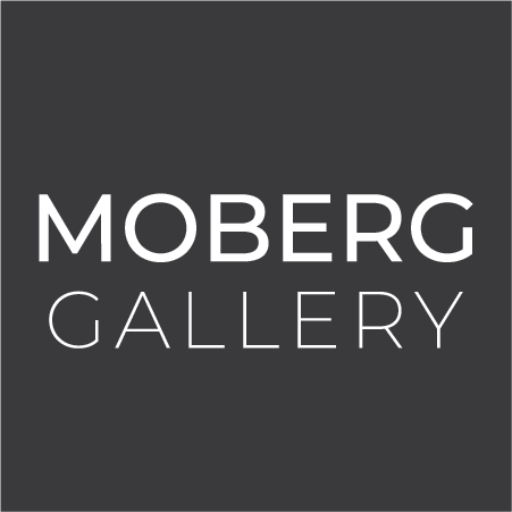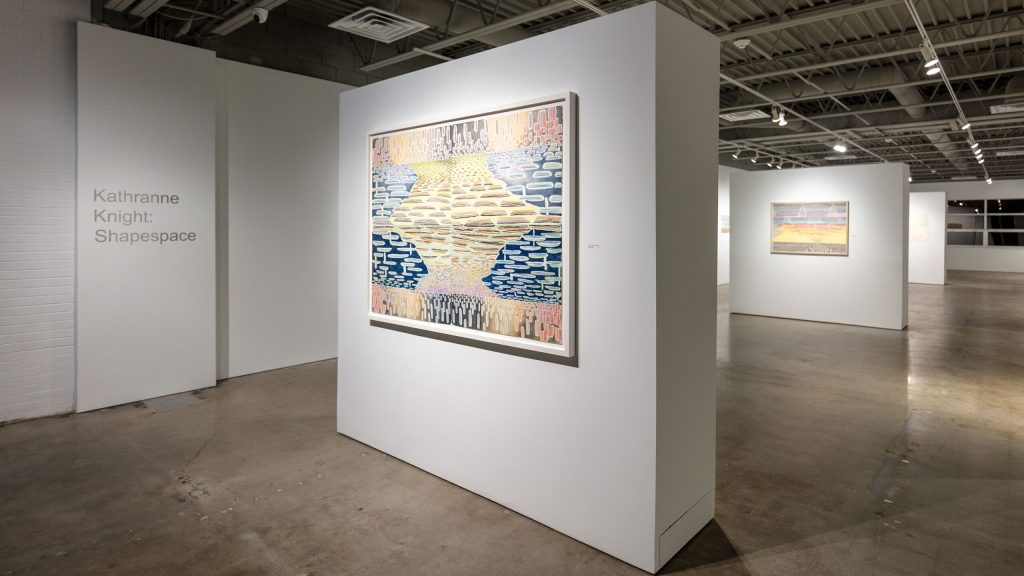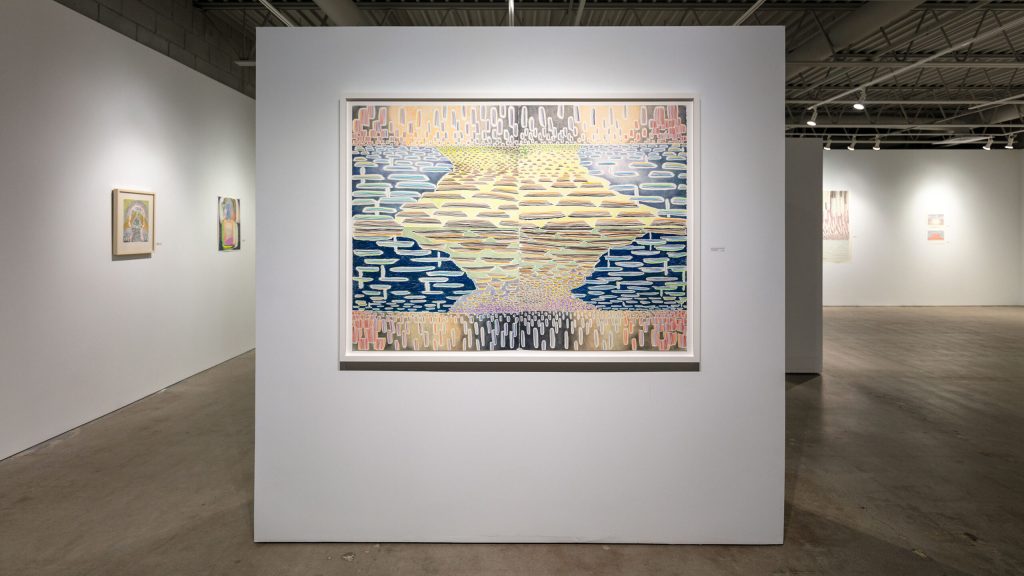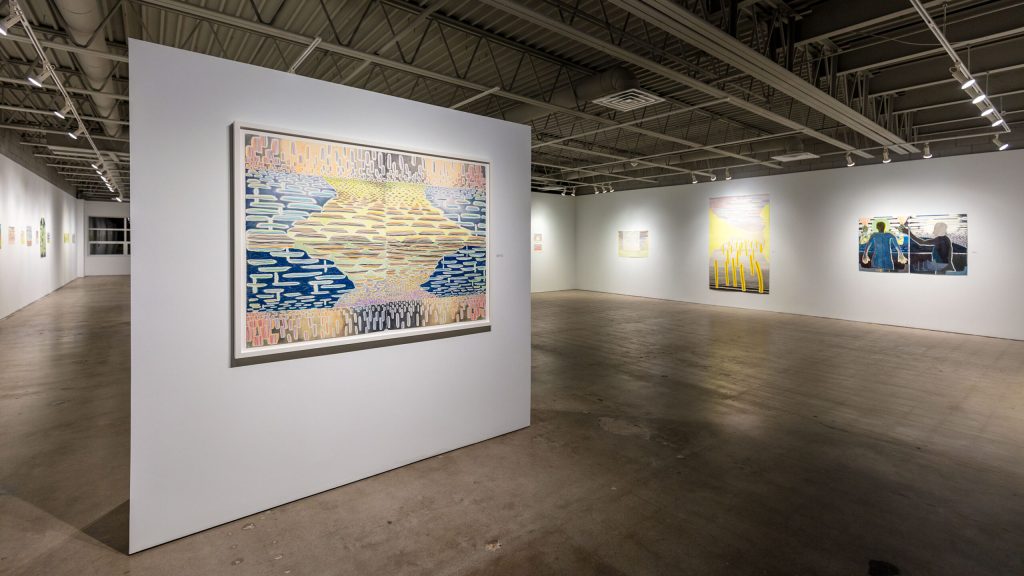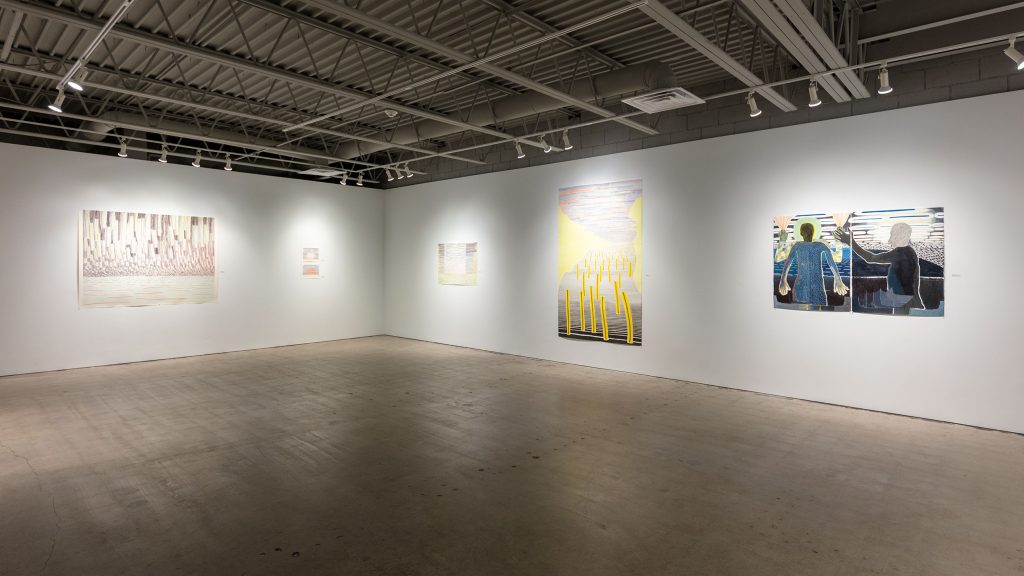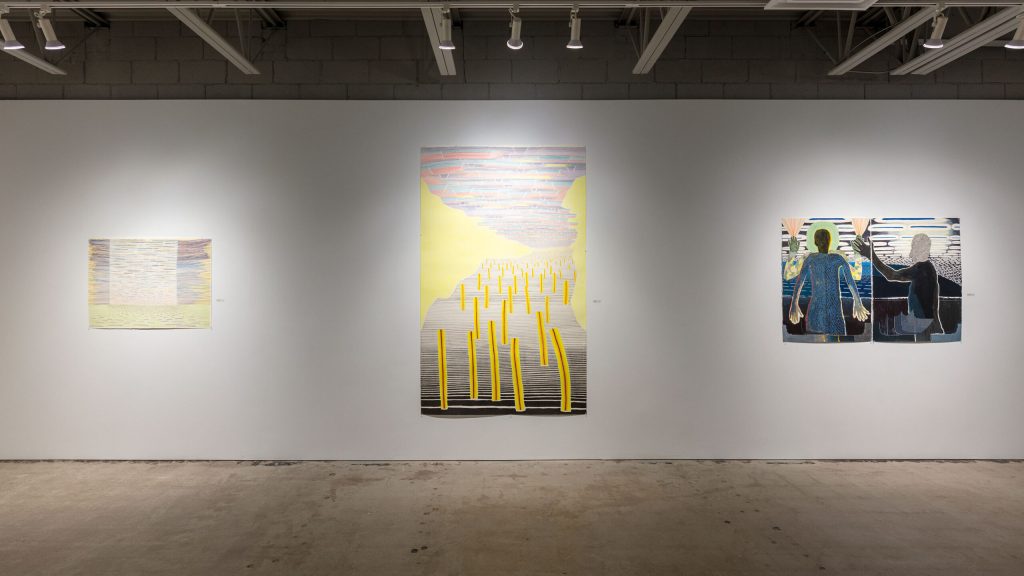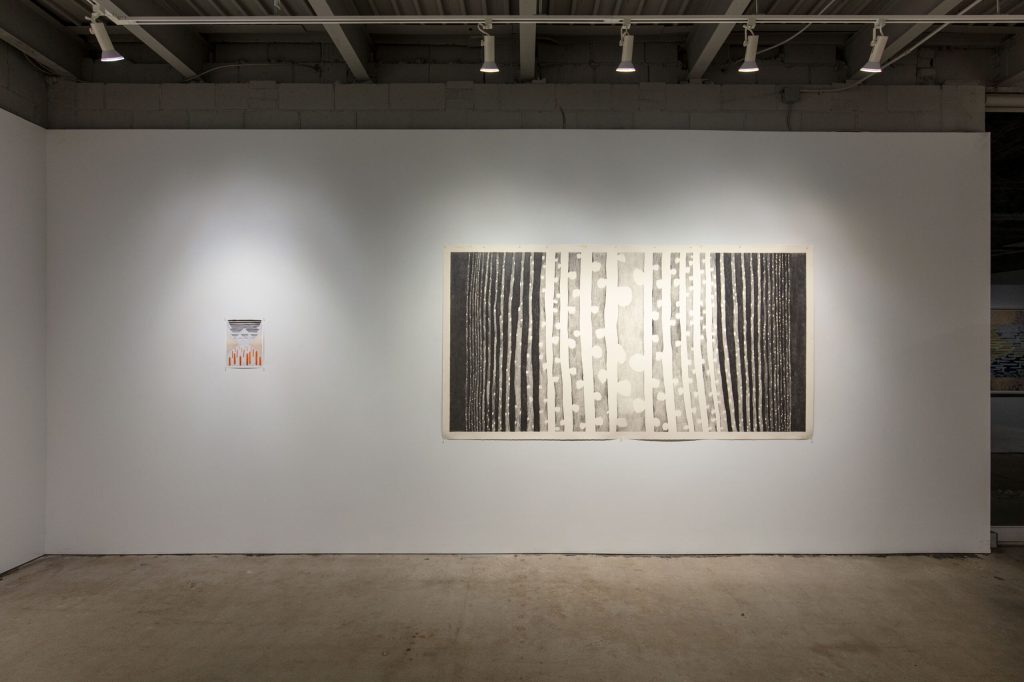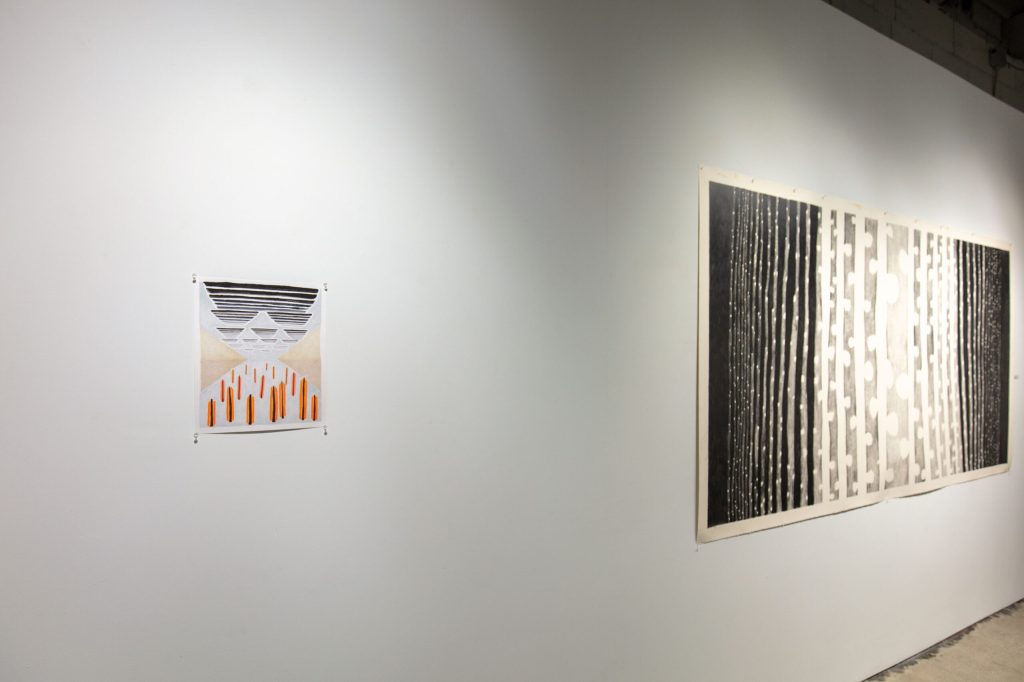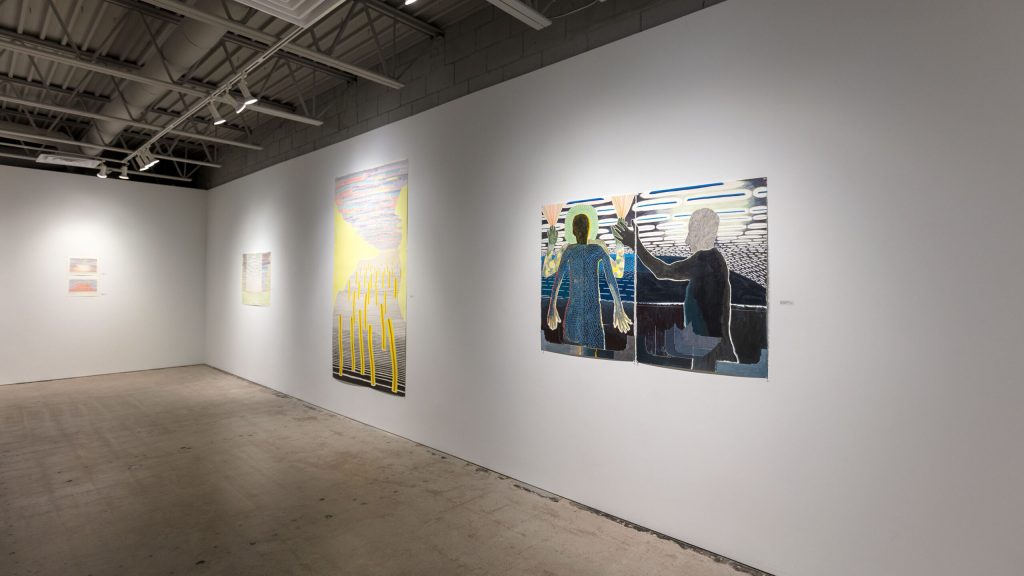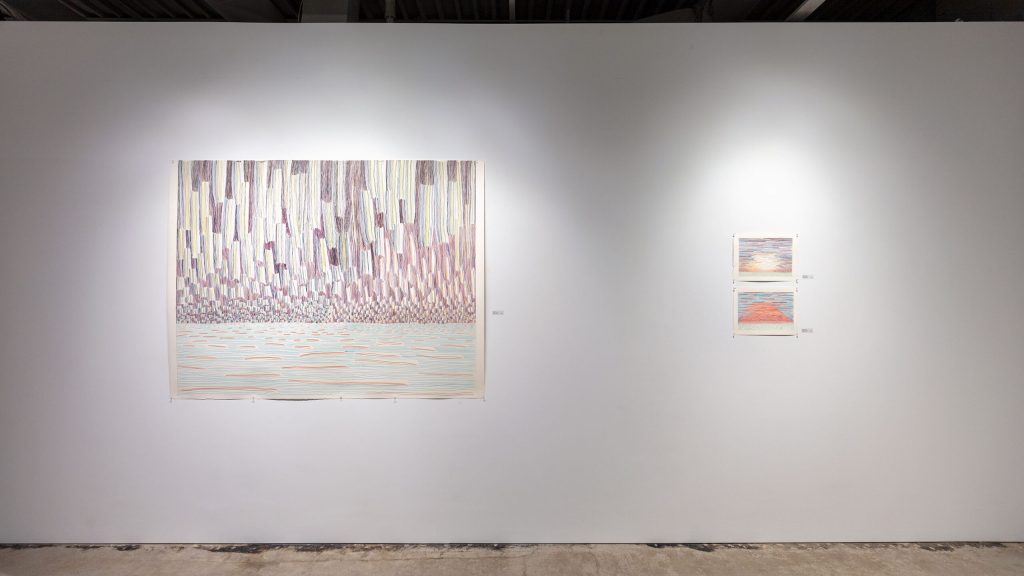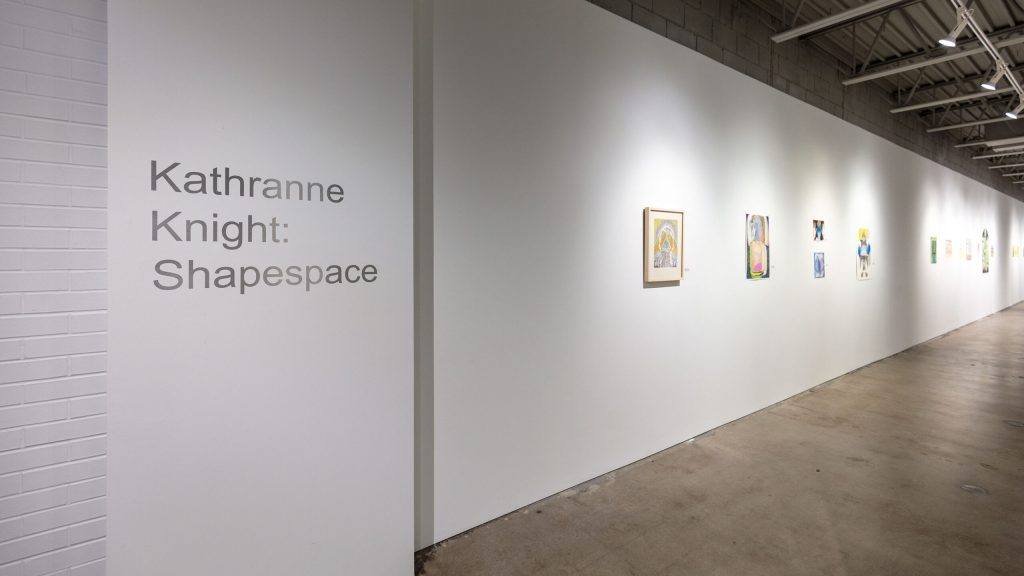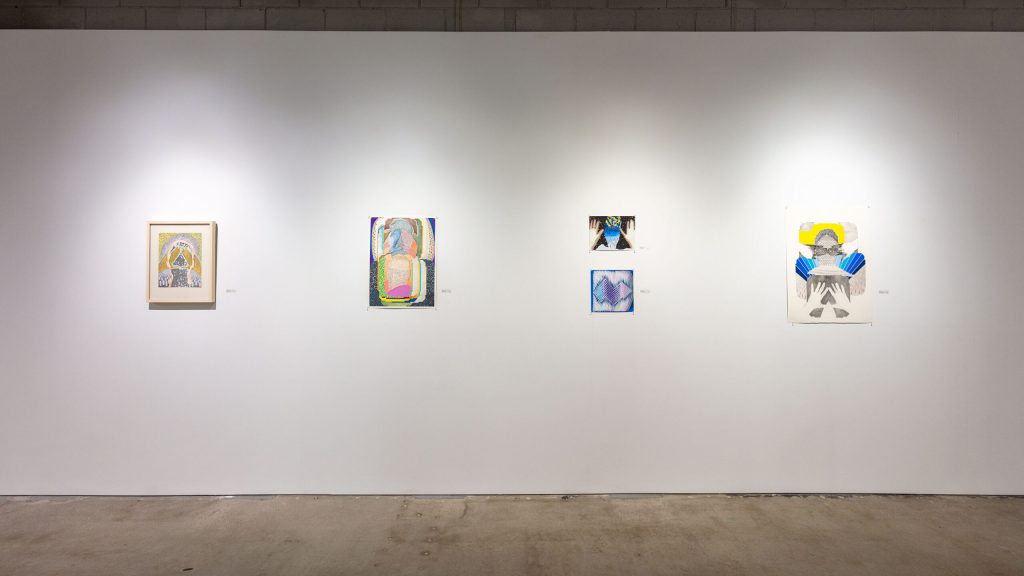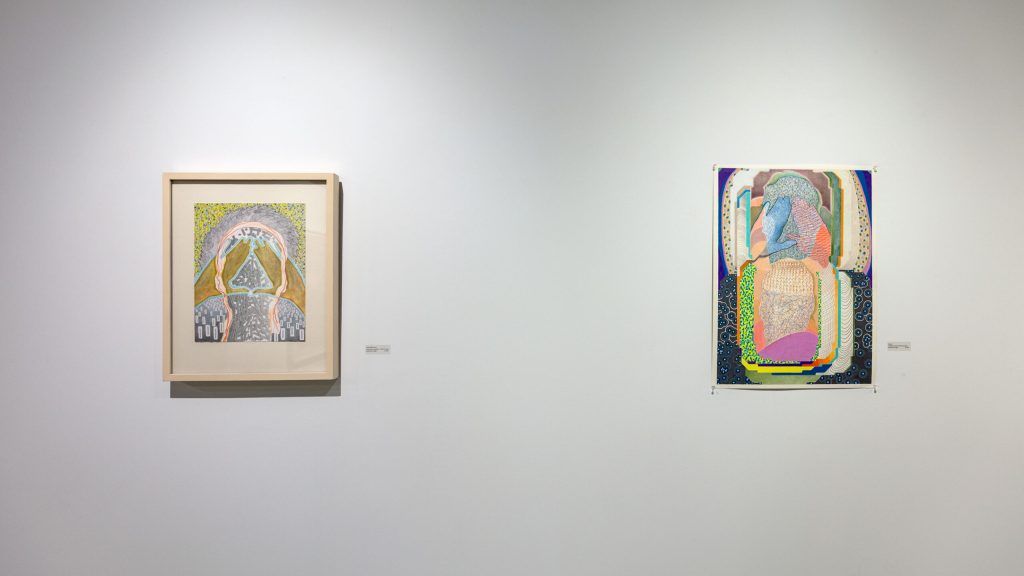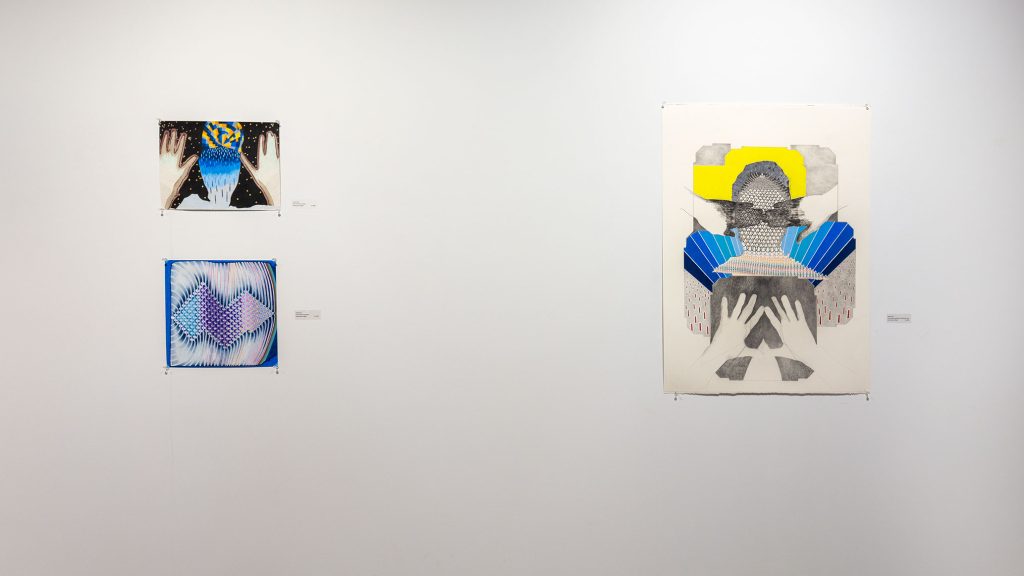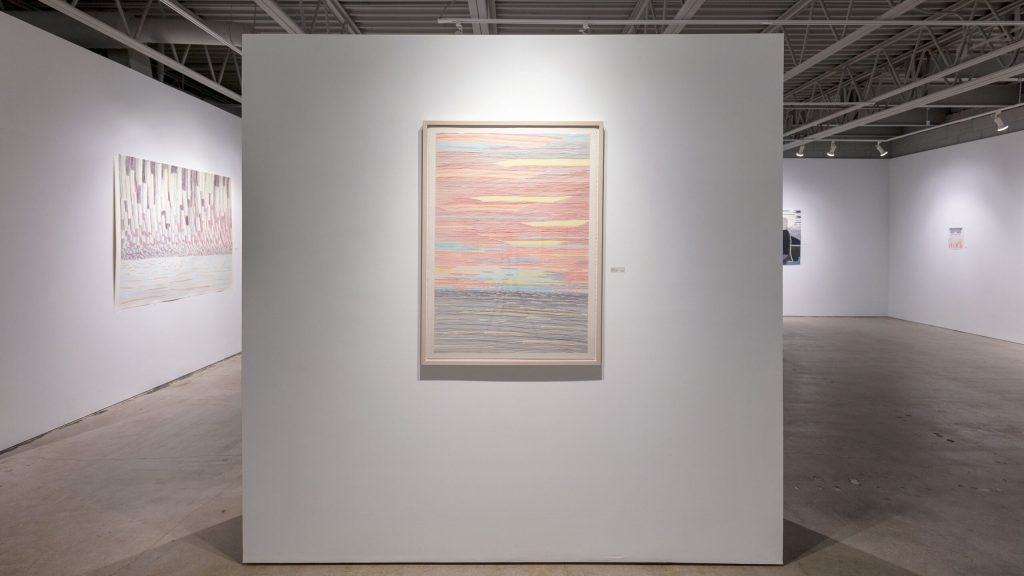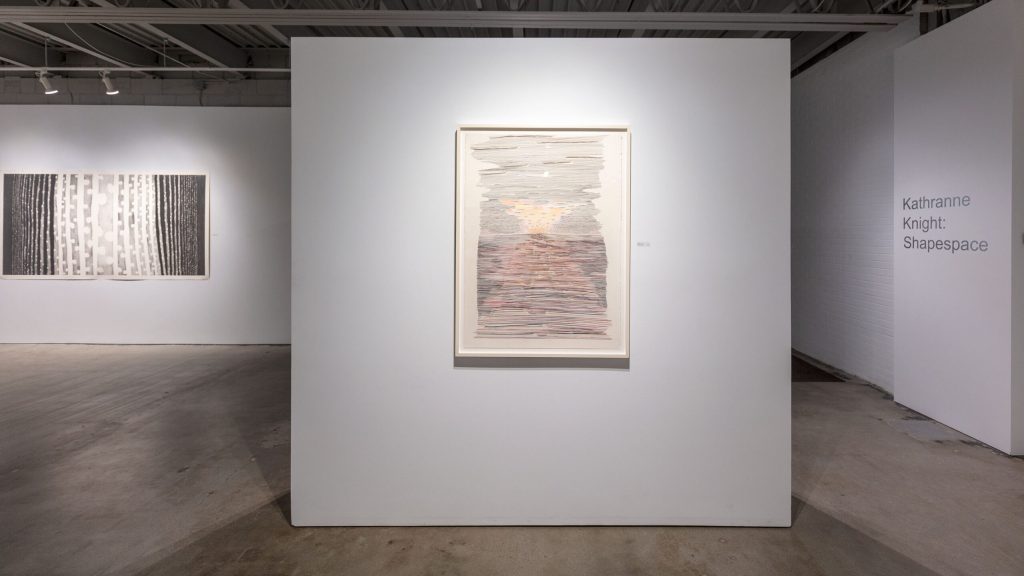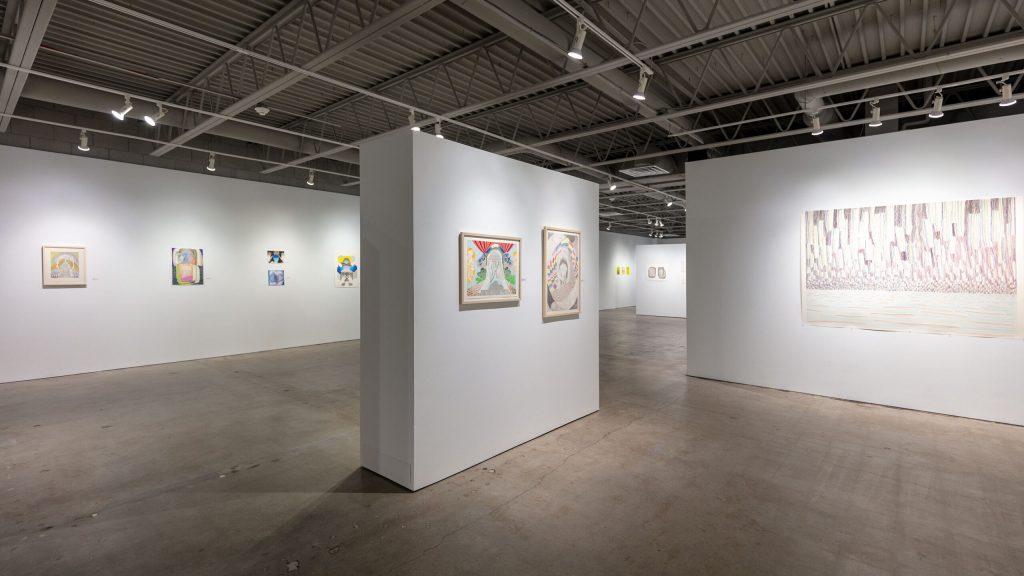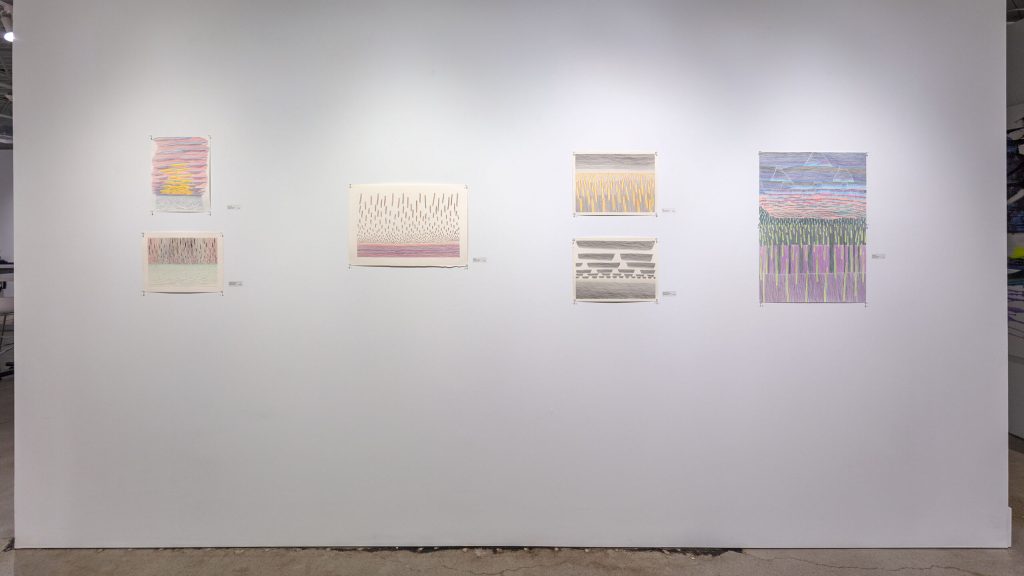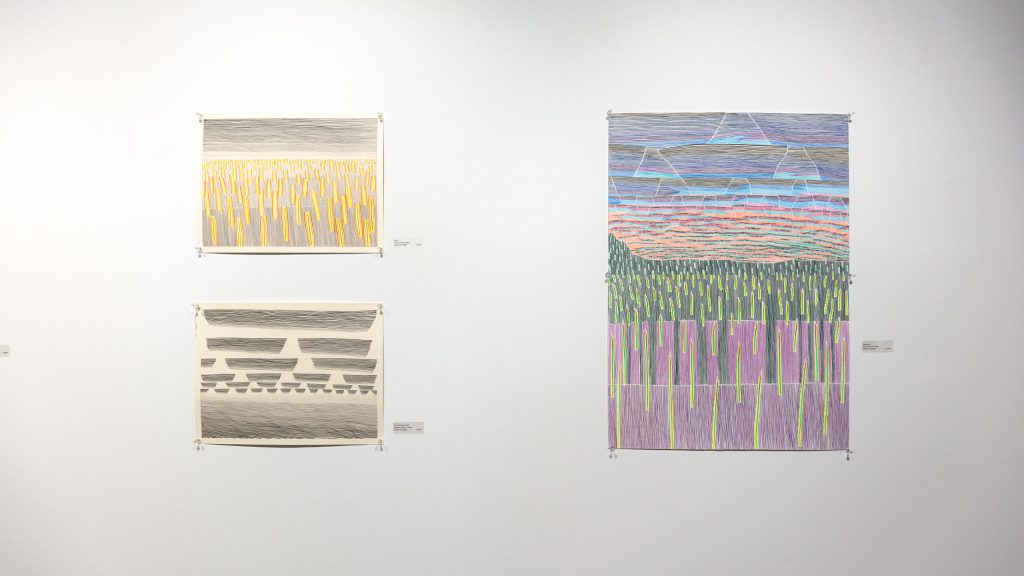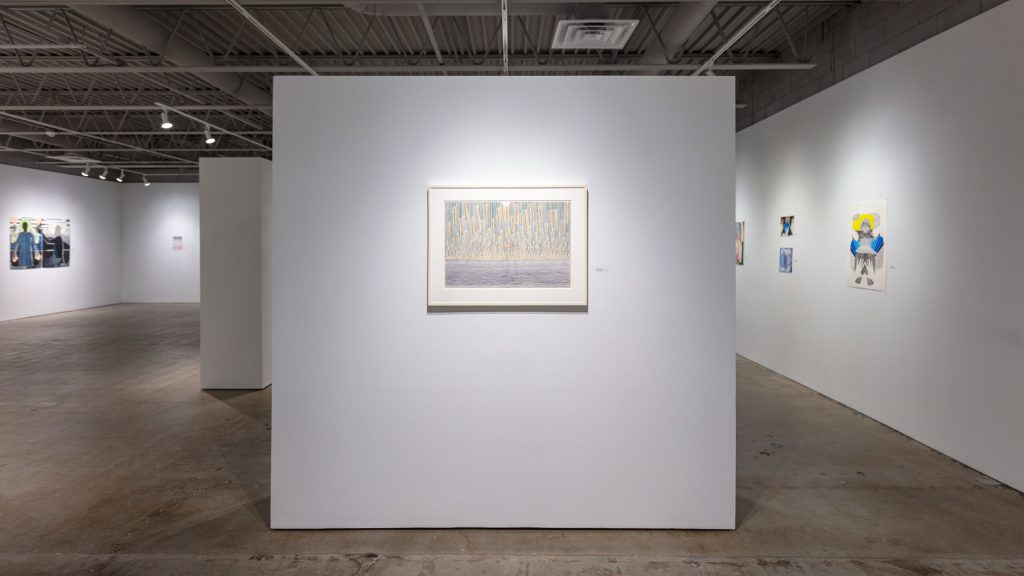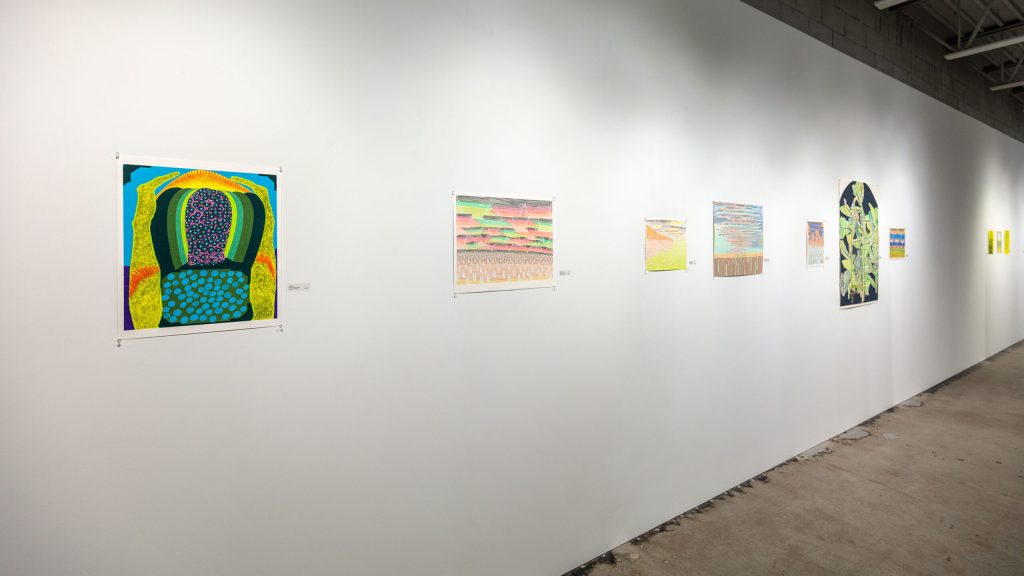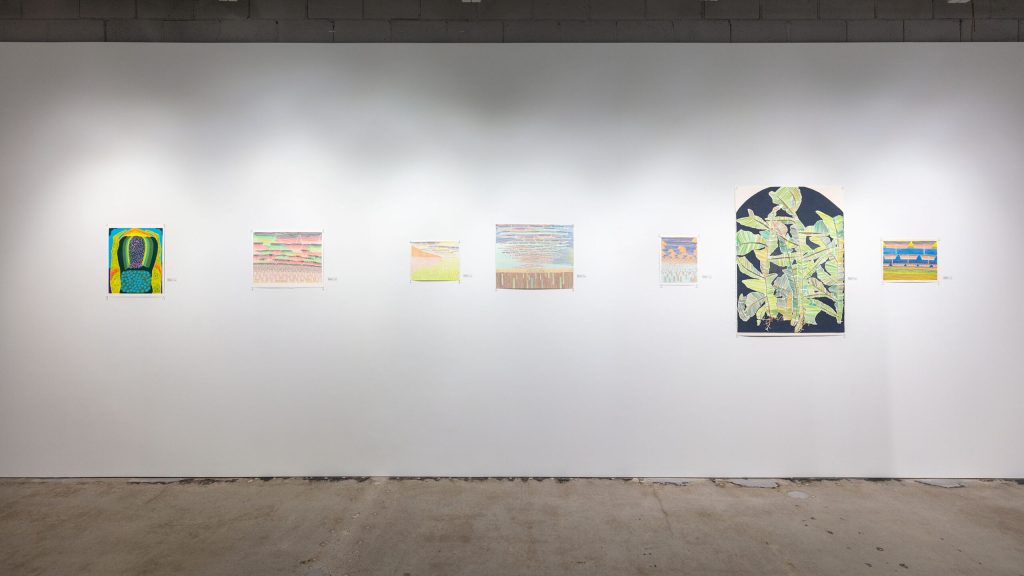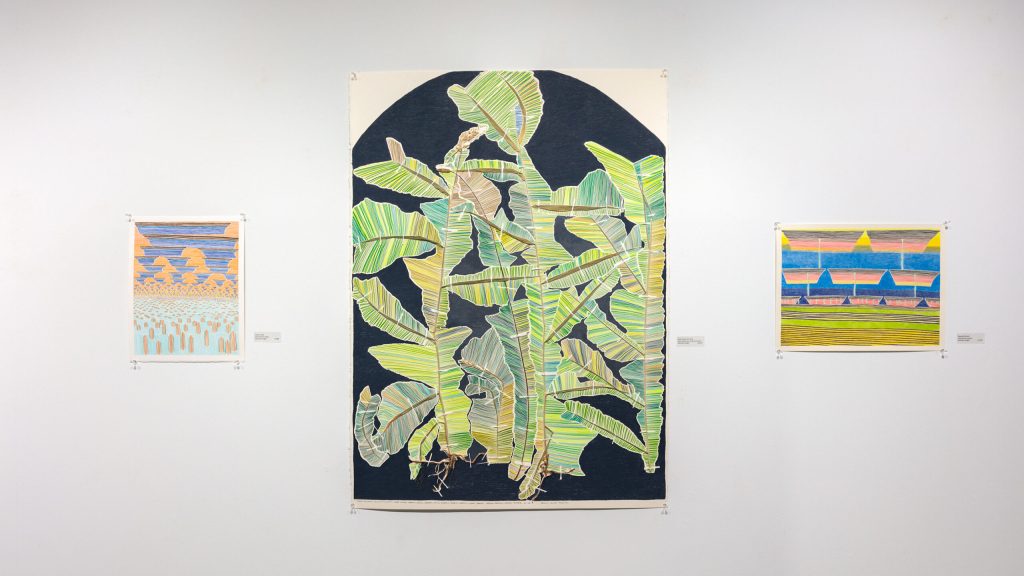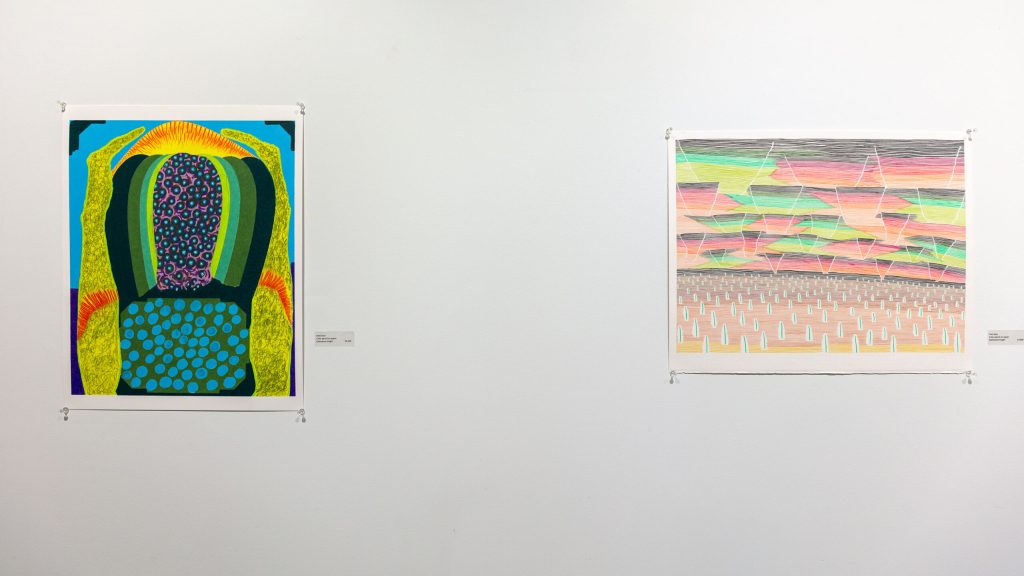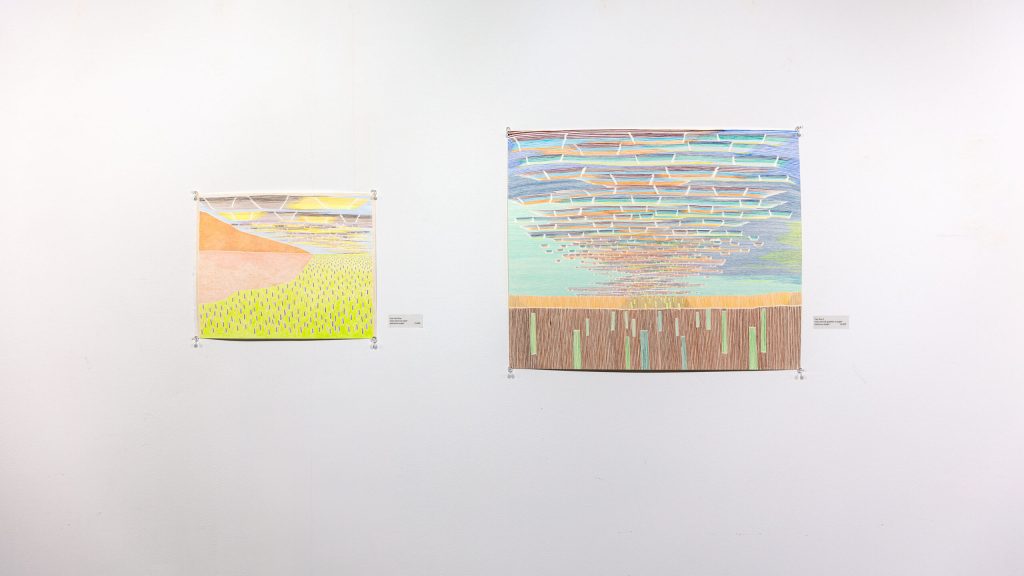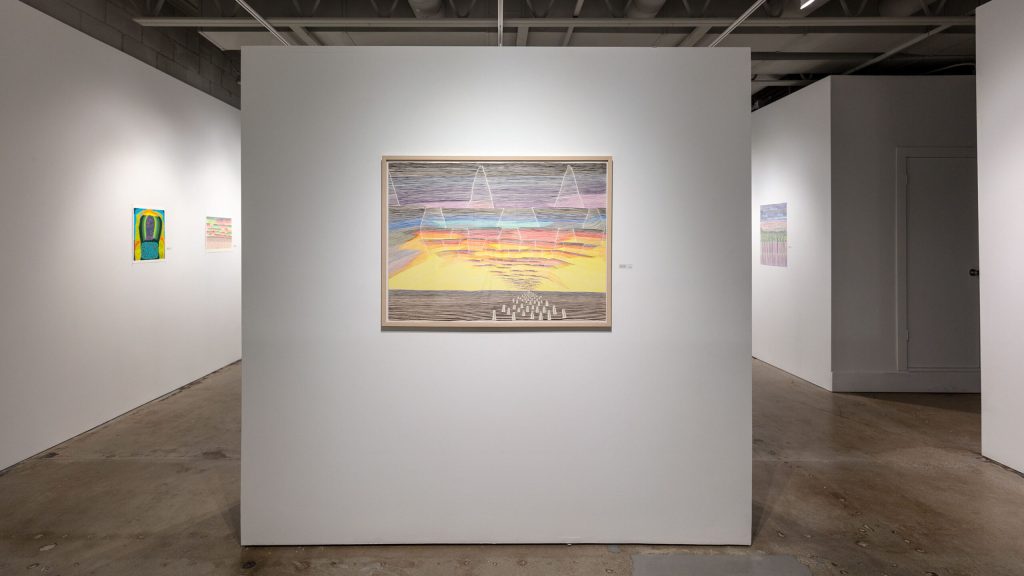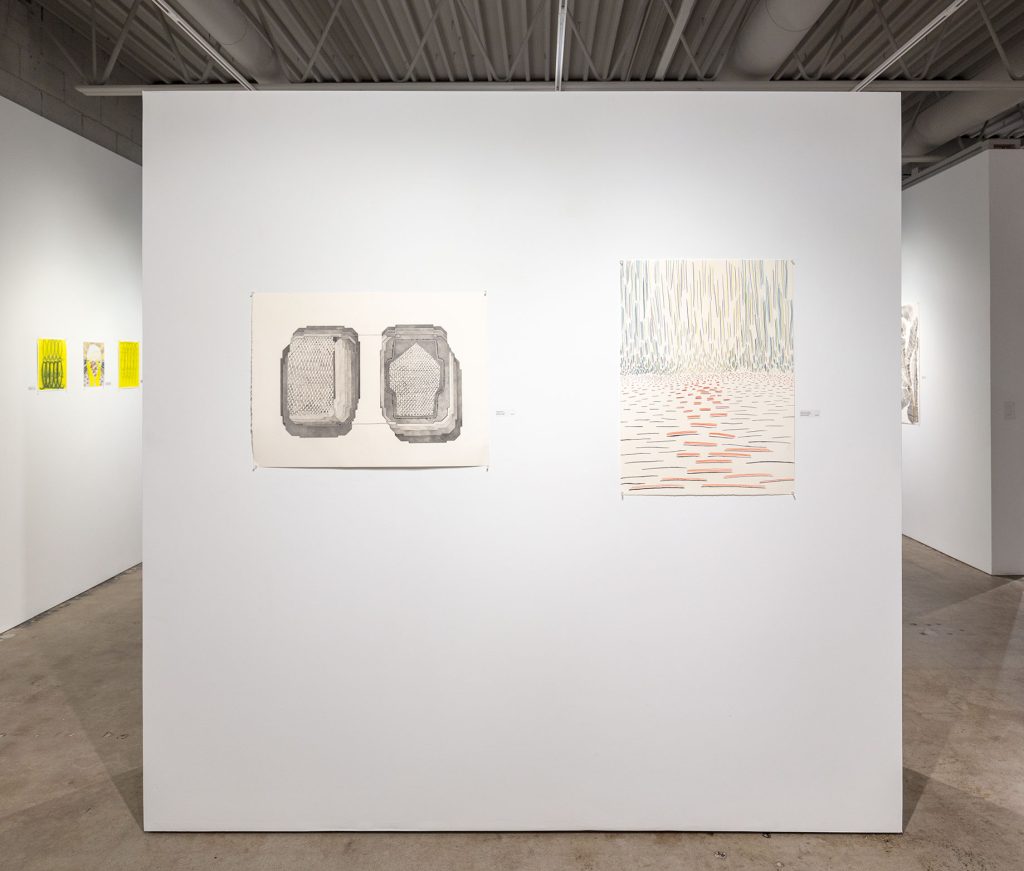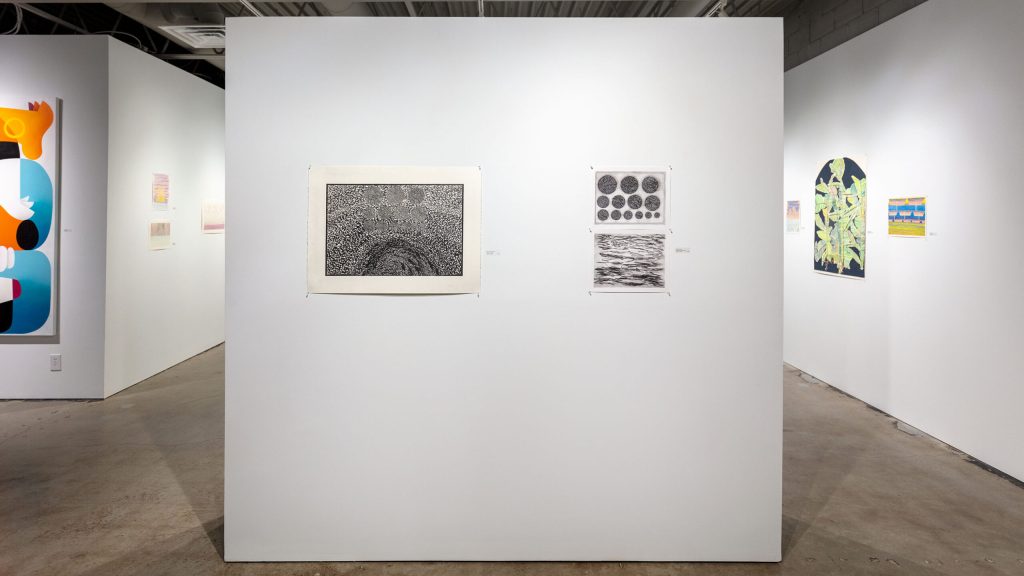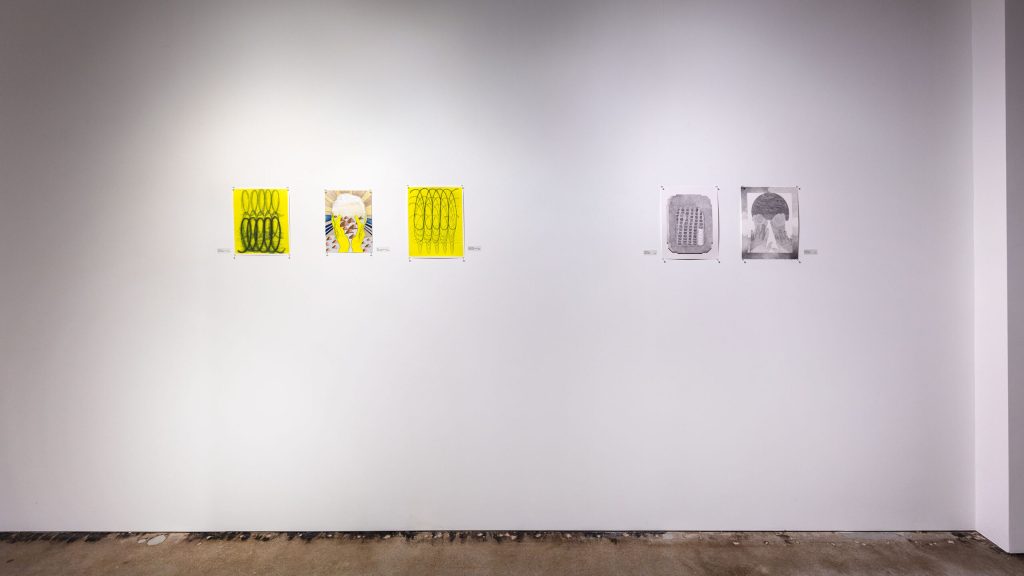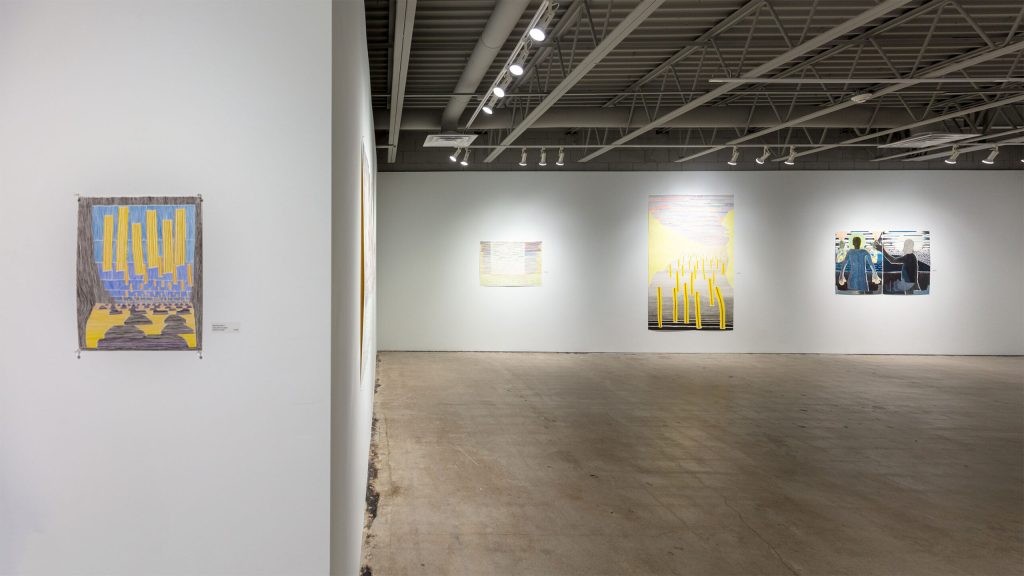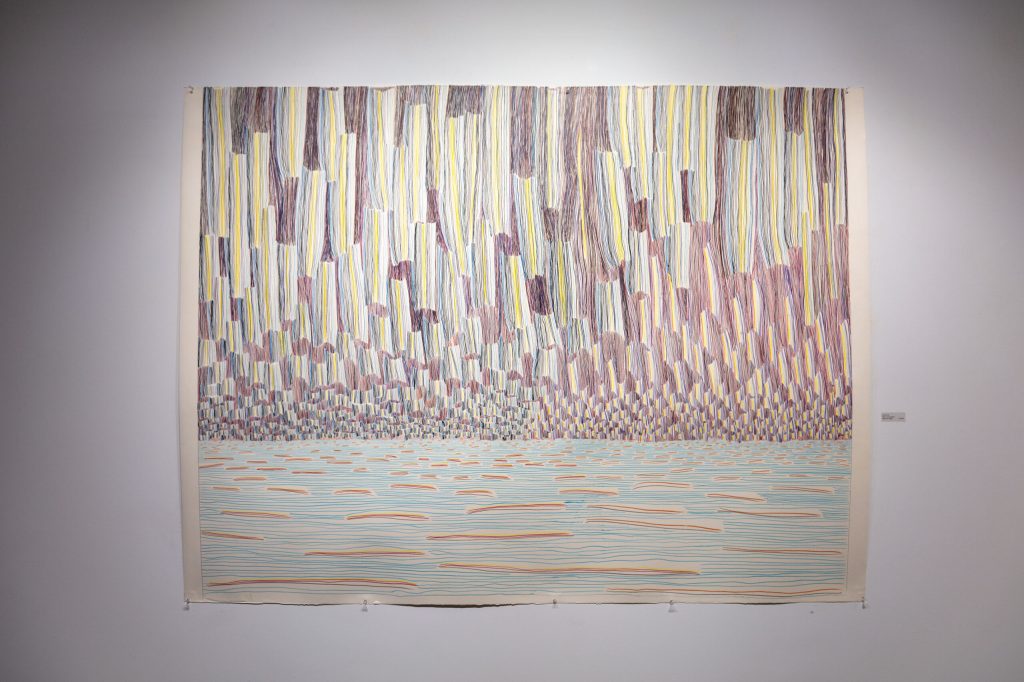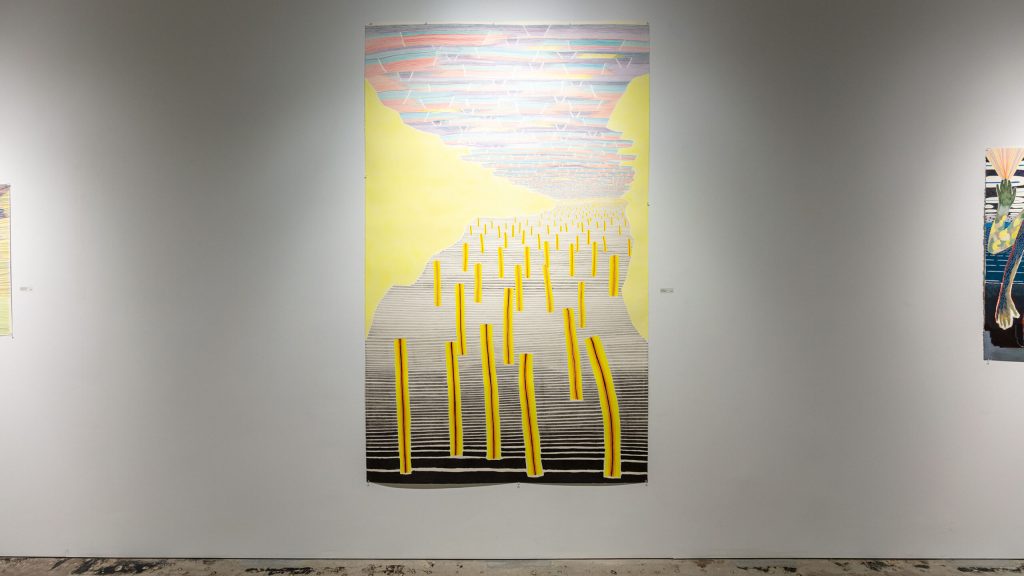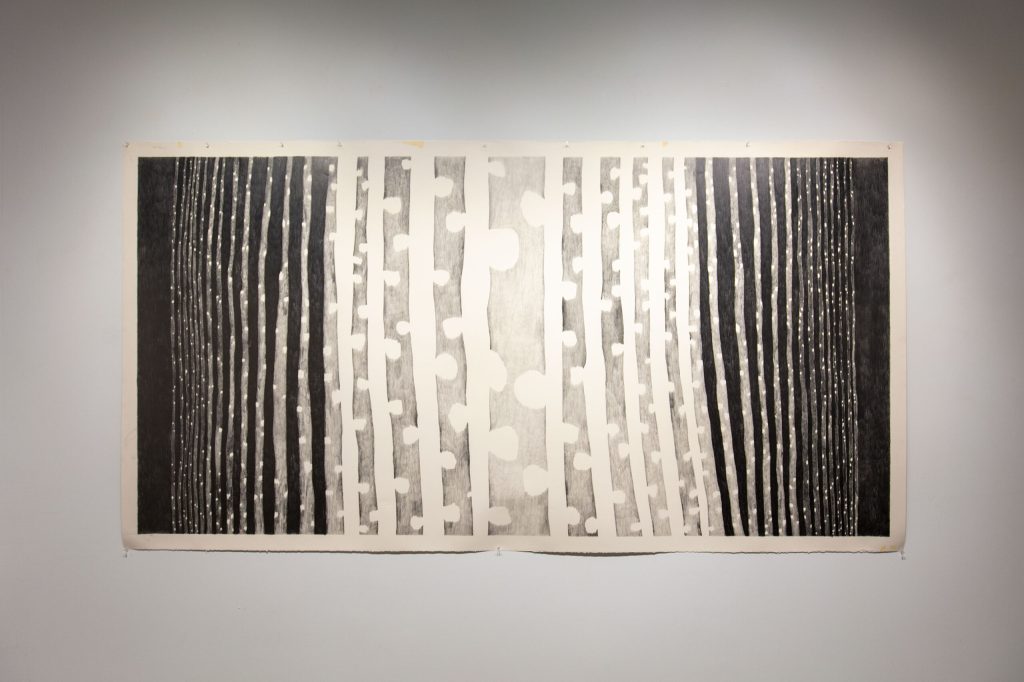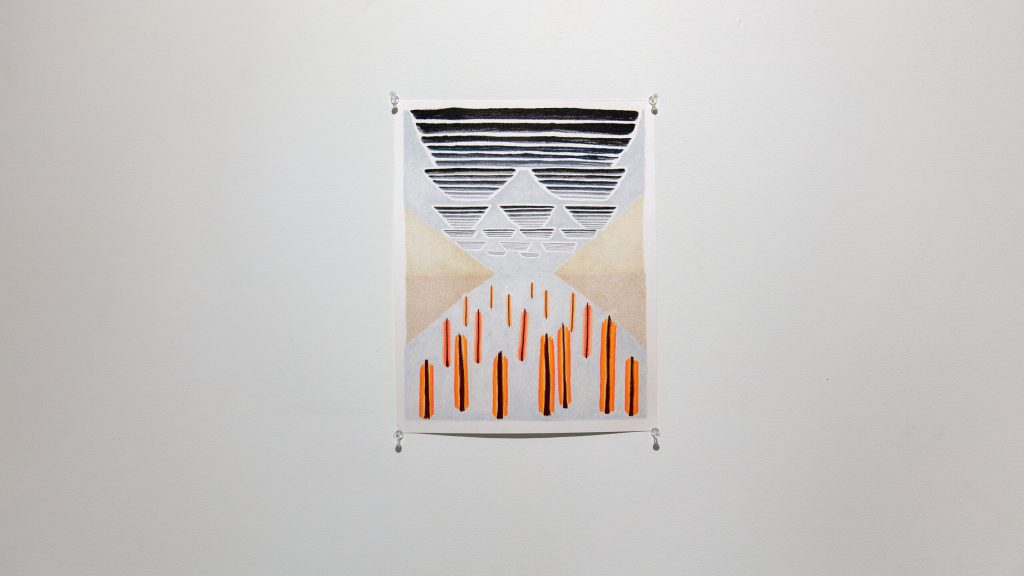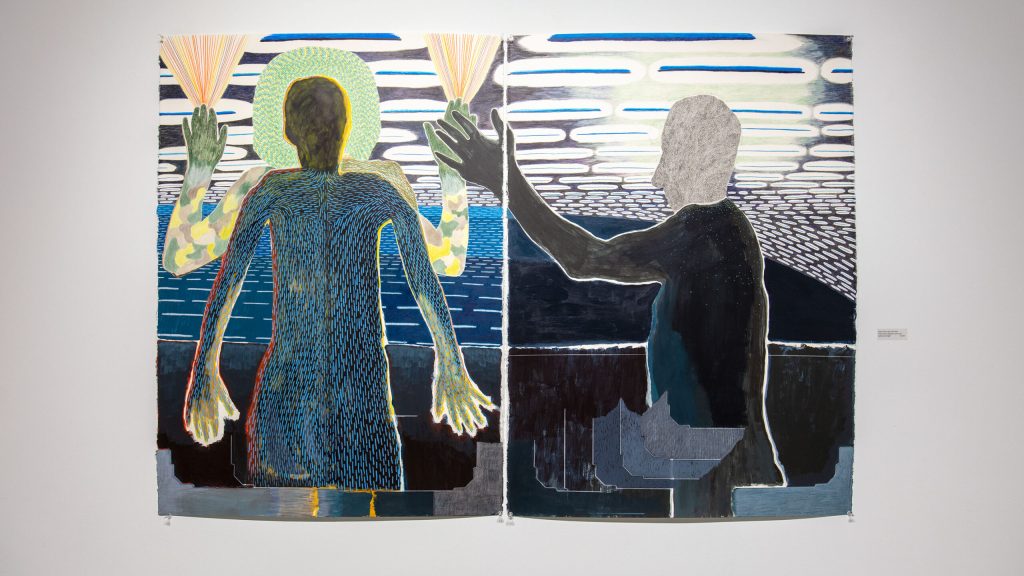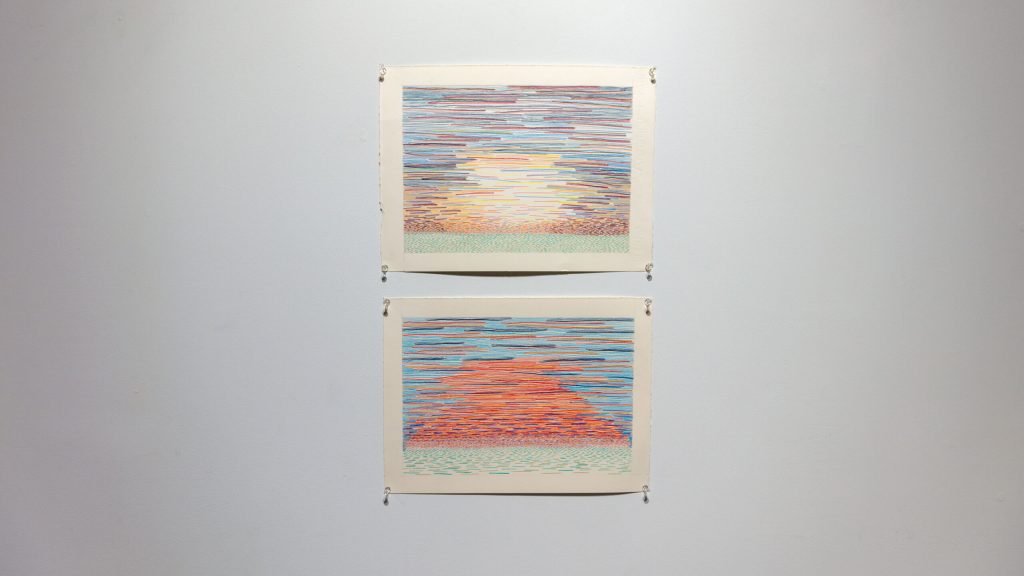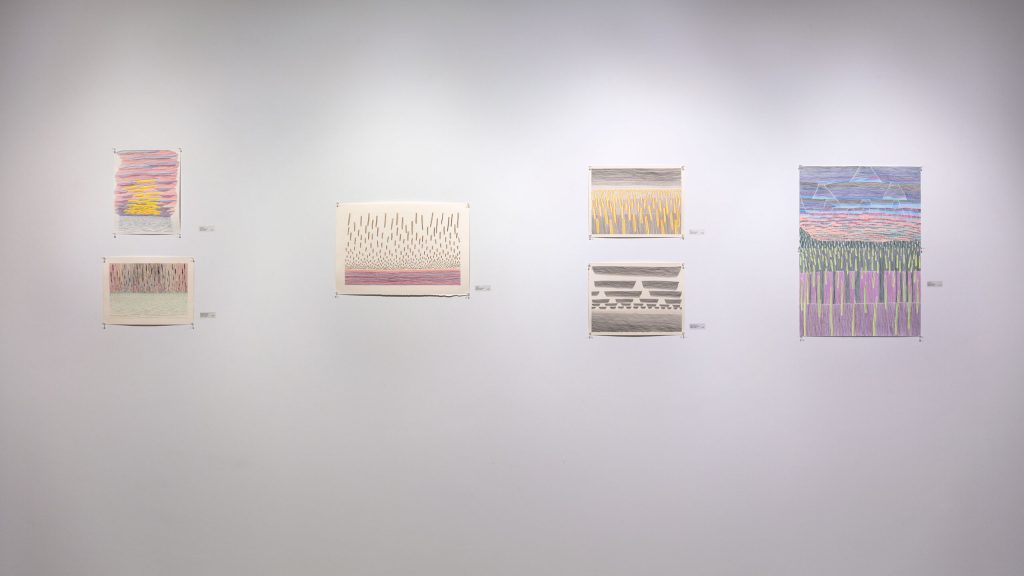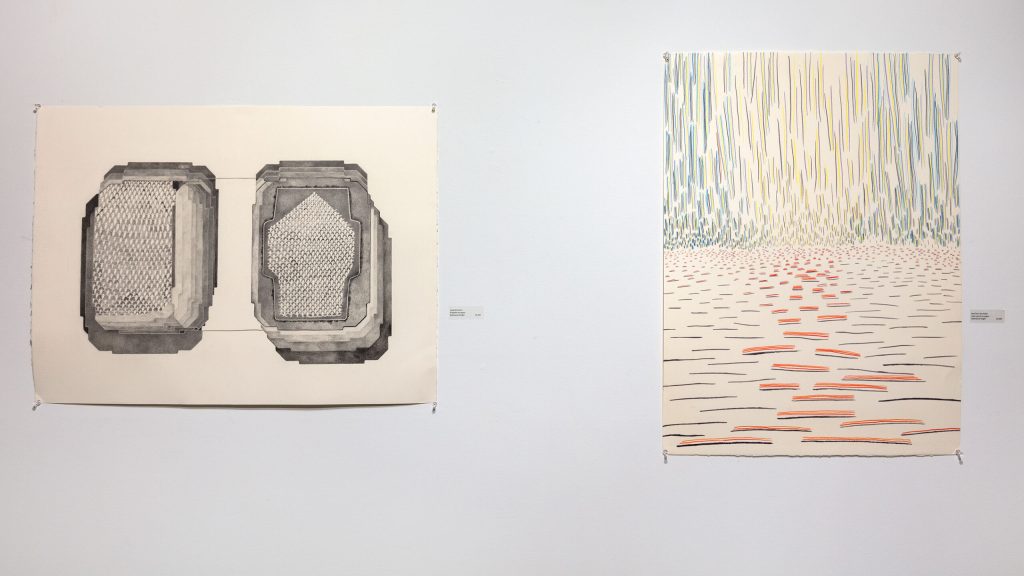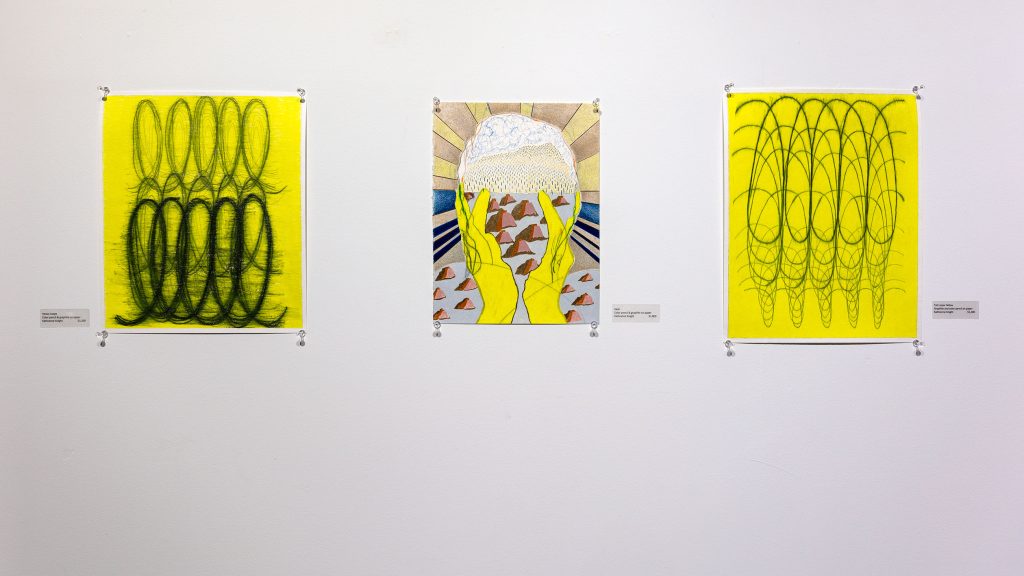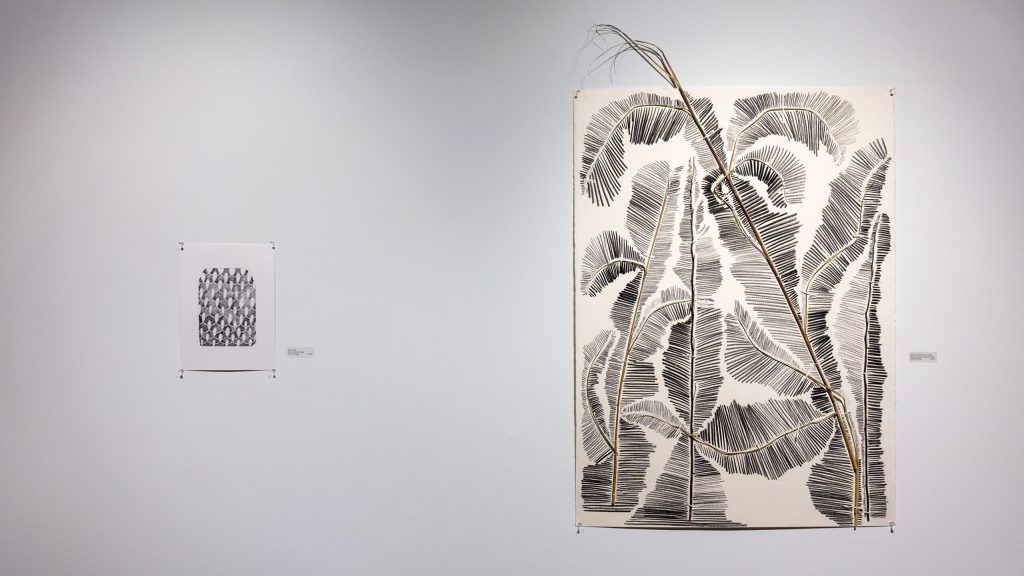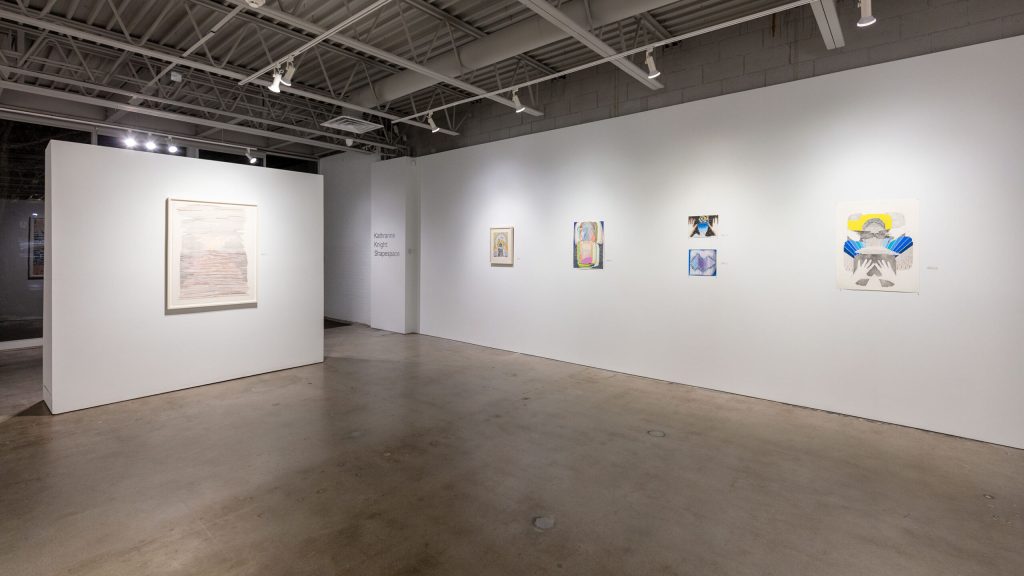TEXT BY MICHAELA MULLIN | VIEW IMAGES
In the exhibit, Shapespace, Kathranne Knight investigates emotional movement through physical space, and so elucidates insides by their contours, vibrancy by the cumulative, and perseverance through voluminous drawing. The Line, singularly, takes on dynamic elements. Lines en masse, however, become the dynamism an individual inherently, though seemingly in dormancy, possesses. Therefore, the dynamic is inheritance, as any lineage embodies.
Knight’s vision is of and toward the ongoing. She is hyper-graphic in her urge to draw, to draw, to draw some more. Not only is she prolific, but each individual work highlights the need to keep or return the pencil and graphite to paper. Discipline is a large part of it, but the engagement with memory transformed into line or the forgotten thought into color, is something she is compelled to—it becomes a means to procure, to keep, to savor, and release.
In Knight’s Line Landscapes, such as “You are the Lake of My Seeing,” “Separation,” “Heavy,” and “Square Light Jacquard,” breathing can be felt. This act reenforces extant feeling and delivers new view. Perspective is brought about through horizontal application and intimation, as always, but the ever-shifting rising and setting of color and line delicately voice as with a harp’s midrib (though Knight’s lines are often parallel), and her drawings often deliver glissando, an intricate sliding and shimmer.
Time hitches to space in these works, so a stacking of intentions becomes the true metric and representation, also, of the temporal realm we float in unwittingly. And for Knight, the hapticity of drawing is transportive – travel that, like line after line after line, goes back and forth, not capturing, but transgressing the present. Knight says, “While we might think of the sunset as a comforting trope, I want to show the hovering, unstable moment produced at this juncture of past and present […]”
Knight’s loop drawings are infinitive verbs. Because when curvature discovers continuity, while uncovering unity, looping emerges as the epitome of repetition and change. Imperfection can be the most beautiful, intangible yet inevitable tool at our disposal, and Knight wields it with precision. Because precise imperfection yields itself over, and over. It is a hauntingly accurate representation of all we think and are.
These works follow the passage of time in its distilled form. Looping fills space, densifying it as a fist might open and close, as a hand might tick then tock. “Tethered,” for instance, creates a knitting of lines in gradient color, that evoke kerchiefs for the hand.
“measured/immeasured” is graphite growing like soap bubbles in water. It feels unstoppable, the lather sure to never cease, but to become amorphous and morphous intermittently.
“Bound loops” become a crowd, an audience, a tightening together by framing itself, cropping its growth, intentionally thwarting its movement beyond a frame within a frame of the paper. Edging, like the lines in that rise and fall, are willingly flawed, carrying a candor in its ability to cross itself—not to unloop to a mere segment, or to a line.
For her silhouettes of body and the space holding body, Knight begins these drawings from the literal, or actual, physical world, before the imaginative and the analytic become entwined in their filling out and in. She says, “I begin by tracing forms or parts of forms such as hands, heads, frames, or French curves, that demonstrate a tension between a hard, machine-made edge and the wavering edge of a figure that has been traced from life. Their ‘actualness’ is important to me, and I think of them as ‘given forms’.”
Trace: a thing that is left behind. To trace: the action that culls contour from form. What happens when the shape of us is also a remnant of self, a boundary of self, and a reverberation of selfhood. What space is created of remnants, boundaries, and reverberation? The very space that Self shapes.
Knight’s Given Forms, in works such as “Actual/Reflection,” “Held,” and “Son and Father,” have attributes of flowering auras that spiral into variegated sections, and hands that hold and cover, block and see. The compositionally central outline often becomes the furthest point inside—deep inside, in some cases. Halos emerge as protective gear, helmets in camouflage to hide the head that holds the identity that is self. In this way, Knight’s ‘portraits’ are reminiscent of what Julia Bryan Wilson writes of Alice Neel’s portraits: “the ideology of her art is grounded in a belief that the human form was a primary conduit of social meaning” (“Alice Neel’s ‘Good Abstract Qualities’,” Alice Neel: People Come First, The Metropolitan Museum of Art, New York 2021).
The social meaning in Knight’s work is close to home; the first social relation we have is familial. The drawings, large and small, are autoptic yet dynamic documents of a world that is actual yet filtered, literal yet imagined, factual and philosophical, because our relations are the very relative things in our lives. And time is mechanical in how we acknowledge it, but also insists in our mental and bodily wavering.
View works by Kathranne Knight
Exhibit Images
